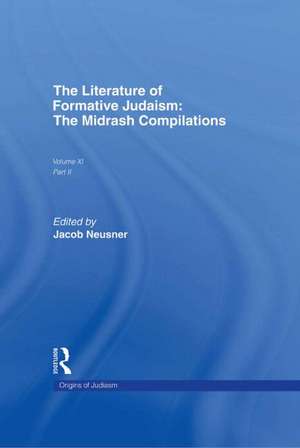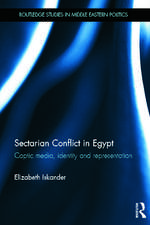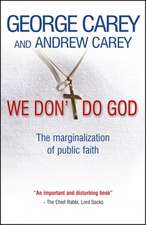The Literature of Formative Judaism: The Midrash Compilations
Autor Jacob Neusneren Limba Engleză Hardback – mar 1991
Preț: 1243.38 lei
Preț vechi: 1516.32 lei
-18% Nou
Puncte Express: 1865
Preț estimativ în valută:
237.92€ • 245.45$ • 198.55£
237.92€ • 245.45$ • 198.55£
Carte tipărită la comandă
Livrare economică 26 martie-09 aprilie
Preluare comenzi: 021 569.72.76
Specificații
ISBN-13: 9780824081829
ISBN-10: 082408182X
Pagini: 552
Dimensiuni: 156 x 234 x 30 mm
Greutate: 1.18 kg
Ediția:1
Editura: Taylor & Francis
Colecția Routledge
Locul publicării:Oxford, United Kingdom
ISBN-10: 082408182X
Pagini: 552
Dimensiuni: 156 x 234 x 30 mm
Greutate: 1.18 kg
Ediția:1
Editura: Taylor & Francis
Colecția Routledge
Locul publicării:Oxford, United Kingdom
Cuprins
Judah Goldin, “Reflections on Translation and Midrash,” Proceedings of American Academy for Jewish Research, 1975; Judah Goldin, “The Two Versions of Abot de Rabbi Nathan,”Hebrew Union College Annual, 1946; Joseph Heinemann, “Profile of a Midrash: the Art of Composition in Leviticus Rabba,” Journal of the American Academy of Religion, 1922; Max Kadushin, “Aspects of the Rabbinic Concept of Israel: A Study in the M e k i l t a , ” Hebrew Union College Annual, 1946; Zipporah Kagan, “Divergent Tendencies and Their Literary Moulding in the Aggadah,” Scripta Hierosolymitana, 1971; K. Kohler, “Abba, Father: Titlel e of Spiritual Leader and Saint,” Jewish Quarterly Review—Old Series, 1901; K. Kohler, “The Pre-Talmudic Haggada, Part I,”Jewish Quarterly Review—Old Series, 1893; K. Kohler, “The Pre-Talmudic Haggada, Part II,” Jewish Quarterly Review—Old Series, 1895; A. Kohut, “Zeus in Mishnah, Talmud, and Midrash,” Jewish Quarterly Review—Old Series, 1891; Jacob Z. Lauterbach, “The Two Mekiltas,” Proceedings of American Academy for Jewish Research, 1933; Raphael Loewe, “The ‘Plain’ Meaning of Scripture in Early Jewish Exegesis,” Annual of the Institute of Jewish Studies, London (London, 1964); Bernard Mandelbaum, “Prolegomenon to the Pesikta,” Proceedings of American Academy for Jewish Research, 1954; Eugene Mihaly, “A Rabbinic Defense of the Election of Israel. An Analysis of Sifre Deuteronomy, Hebrew Union College Annual, 1964; Jacob Neusner, “History and Midrash,” Judaism, 1960; Jacob Neusner, “The Development of the Merkavah Tradition,”Journal for the Study of Judaism, 1971; Henry Slonimsky, “The Philosophy Implicit in the Midrash,”Hebrew Union College Annual, 1956; W. Sibley Towner, “Hermeneutical Systems of Hillel and the Tannaim: A Fresh Look , ” Hebrew Union College Annual, 1983; Ben Zion Wacholder, “The Date of the Mekilta de-Rabbi Ishmael,”Hebrew Union College Annual, 1969; Addison G. Wright, “The Literary Genre Midrash,” Catholic Biblical Quarterly, 1966.
Notă biografică
Edited by Jacob Neuser (University of South Florida) with William Scott Green (University of Rochester).



